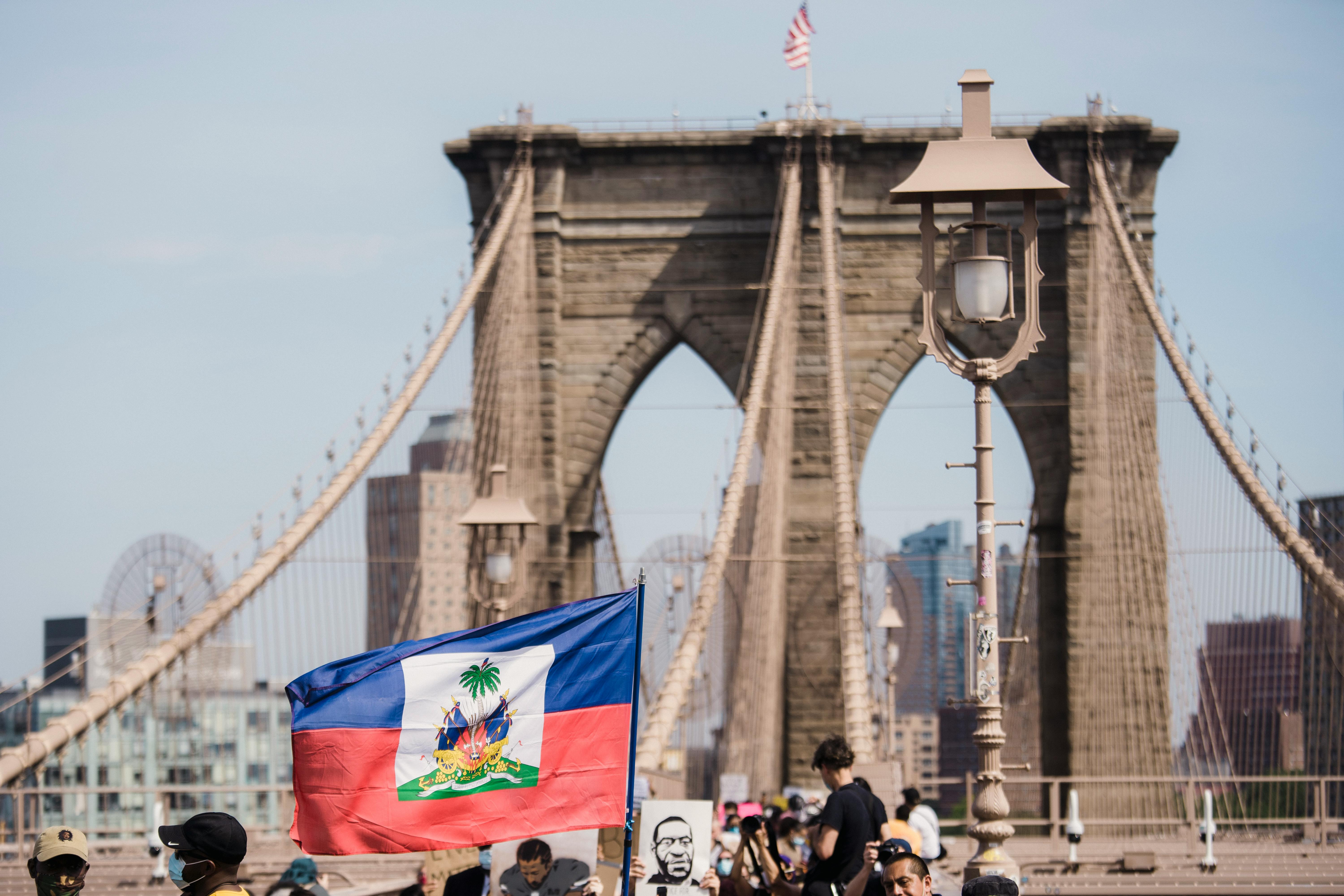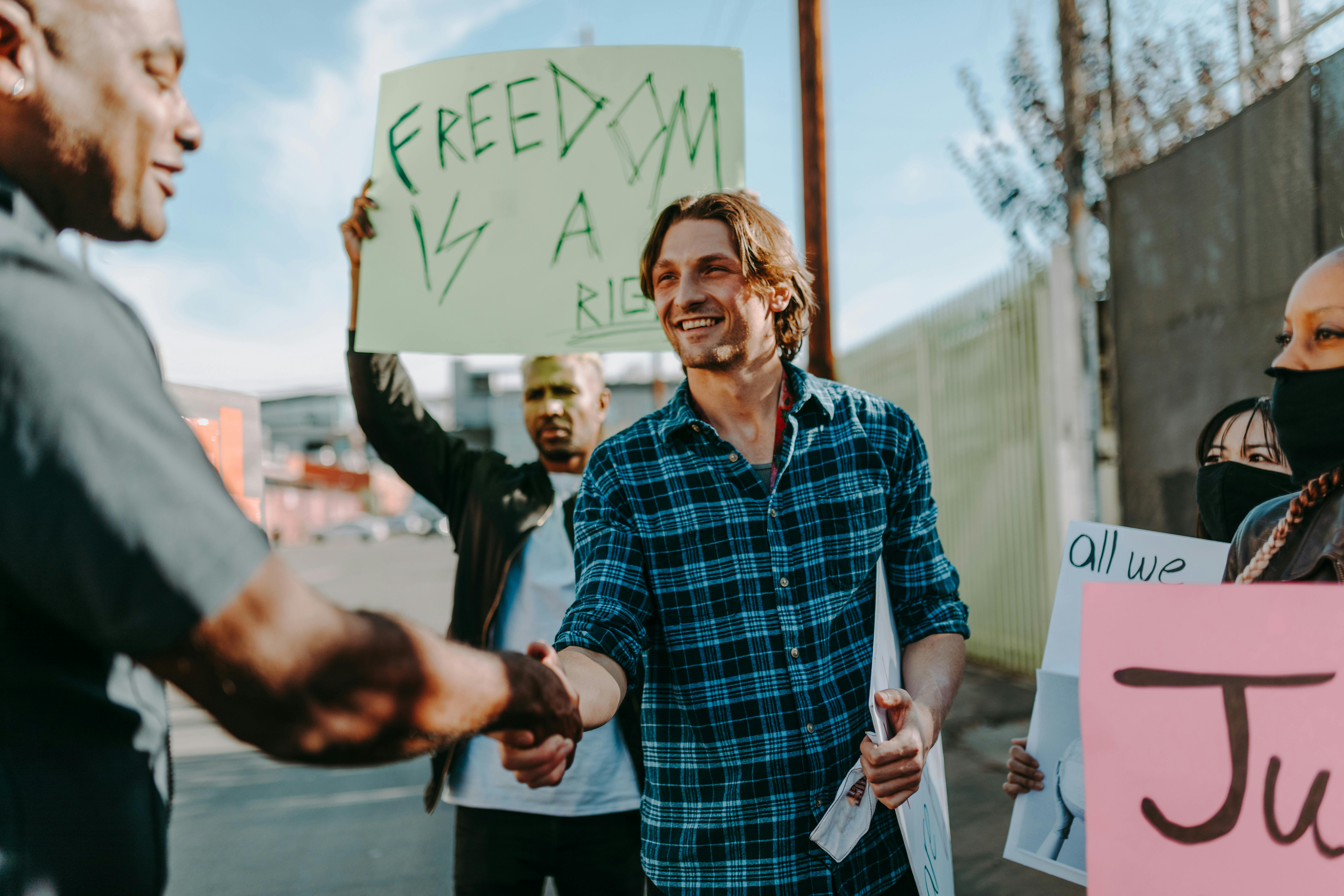Why Is Haiti’s Unrest Escalating Now? Causes, Context, and Urgent Lessons
Why is Haiti suddenly—or so it seems—dominating international headlines with stories of violence, gangs, political confusion, and looming humanitarian disaster? This question has haunted me lately. Honestly, I’ve followed Haiti’s evolving story for years, oscillating between hope and heartbreak. What really strikes me now is the sheer intensity with which unrest has swept the country in 2024 and how many readers I encounter ask, “Why now? What finally pushed Haiti over this edge?” If you’re in that camp—skeptical, worried, or just hungry to understand the real, human dynamics behind the chaos—you’re absolutely not alone.
What Makes Haiti’s 2024 Crisis Different?
Let’s cut through the noise for a second. Unrest isn’t new to Haiti—far from it. But 2024’s wave of violence isn’t just another episode in a long series of disruptions. This moment is different in scope, scale, and trauma, blending decades-old wounds with a sharp new edge. But how? Why now? The answer, as I see it, combines painfully recurring themes (political power vacuums, endemic poverty, historic trauma), but also some wholly new ingredients. I’ll be honest: When you start listening to local voices, activists, and community leaders, it’s clear that something fundamental cracked open this year.
From my perspective, never before have so many factors converged at this level of intensity.
Here’s a scenario that stuck with me: In March, a Port-au-Prince teacher I correspond with described waking up to the sound of gunfire, watching neighbors flee, schools shuttered indefinitely—a city “trapped between gangs and ghosts.” That haunting phrase says more than most news headlines ever could. But is it all just about local gangs? If only it were so simple. Let’s put it in context.
What makes Haiti’s 2024 unrest especially alarming isn’t just the violence per se, but the complete absence of functional state authority. No president, no parliament, no routine police control in major swathes of the capital. Gangs filling the power vacuum. Outsiders (including many longstanding aid workers) pulled out. Food and medical aid blocked. Airports and government ministries attacked. It’s chaos layered onto trauma—but chaos with very recent, very specific causes.
Haiti, the world’s first Black-led republic and the first independent Caribbean nation (1804), has experienced more than 30 coups since its founding1.
To really answer “Why now?” we have to dig beneath the headlines into both Haiti’s legacy and today’s pressures. I’ll break down the factors—political, economic, international, and deeply personal—that make today’s crisis both a culmination and, unsettlingly, maybe a new beginning of sorts. Trust me, as we dive deeper, this is rarely a story of “just another failed state.” There’s agency, resilience, and honesty to be found in the chaos—if we’re willing to look.
Historical Forces Underlying Today’s Chaos: Does the Past Ever Stop Haunting Haiti?
Now, before we get lost in the day-to-day drama, let’s rewind. If you want to understand Haiti’s present crisis, you absolutely have to start with its history of exploitation, revolution, and abrupt, imposed change. That’s not just academic hand-waving. Every conversation I’ve had with Haitian professionals over the years refers—not defensively, but with weary clarity—to colonial plunder, 19th-century debts, and the “curse” of independence in a world that was not ready for Black liberation. Sound abstract? It’s still shaping daily life.
After Haiti declared independence from France in 1804, it was forced to pay “reparations” to French slaveholders—an estimated $21 billion (in today’s dollars) over a century2.
- 1804: Independence won after world’s only successful slave revolt.
- 1825–1947: Crushing “independence debt” to France crippled Haiti’s economy2.
- 1915–1934: American military occupation with imposed reforms.3
- 1957–1986: Duvalier dictatorship (“Papa Doc” and “Baby Doc”)—notorious for violence and corruption4.
- 1990s to present: Repeated foreign interventions, failed elections, and unresolved poverty.
Still, history—no matter how oppressive—doesn’t fully explain why unrest exploded in 2024 specifically. Is it possible, I wonder, that cumulative trauma plus a plunging economy, spiraling gang control, and utter governmental breakdown proved the final straw? Let’s dissect how the dominoes fell, both slowly and all at once.
2024’s Core Drivers: Political Vacuum, Gang Domination, and Economic Collapse
Having listened to dozens of Haitian community organizers in private calls this spring, I noticed a theme: a once fractious society now unified in fear and paralysis. But, stepping back—what were the primary, direct catalysts that made this year feel so irreversibly broken? Here’s my honest take: it comes down to three converging forces, each bad enough alone, but together? Devastating.
A. The Political Abyss: No President, No Parliament, No Timetable
Start with the basics: there is currently no functioning government in Haiti—a fact that still gives me pause every time I say it. When President Jovenel Moïse was assassinated in July 2021, his successor was never democratically chosen5. Ariel Henry, an appointed prime minister, delayed elections citing instability. By 2024, Henry himself was forced out by popular uprising and three years of failed promises. Multiple transition councils have since collapsed, or failed to inspire public legitimacy—a constitutional crisis with no end date.
This isn’t just dysfunction—this is government by absence. Whenever I talk with colleagues in Haiti, the refrain is the same: “There are simply no rules. No lines to stand in. No one to call when violence erupts.” I can’t stress that enough: when the basics of order break, so does everything else.
B. Gangs and the Logic of Fear
What’s wild is how rapidly gangs moved in to fill the void. Not small-time criminals—these are well-armed, organized networks with deep political connections. In reality, up to 200 distinct gangs now operate throughout Port-au-Prince and other urban centers, providing everything from food distribution to rough “justice” and extorting whole neighborhoods7.
- Top groups like G9 and G-Pèp engage in ongoing turf wars and block crucial infrastructure8.
- Rape and kidnapping have skyrocketed since late 2023; the UN counted 8,400 victims in early 2024 alone9.
- Gangs often have ties to powerful elites and (former) police; accountability is nearly nil.
I’ll admit, I did think at first Haiti’s gang issue was mostly a product of chronic poverty. But after comparing UN, human rights, and academic data sets, I’ve revised my earlier view: it’s about a deliberate power grab, enabled by both political elite (desperate to hold power) and international neglect when it mattered most. More or less, the vacuum created both the opportunity and the incentive for today’s criminal-political alliances.
C. Free-Falling Economy: Despair by the Numbers
Economic collapse functions as the gasoline on an already raging fire. Recent World Bank figures shocked me—over 96% of Haiti’s population lives below the poverty line (less than $5.50/day), and food insecurity affects at least five million people10. Inflated prices for goods soar as dollars and gourdes become more scarce.
| Indicator | 2015 | 2020 | 2024 |
|---|---|---|---|
| GDP Growth | +2.1% | -1.5% | -3.2% |
| Poverty Rate | 58% | 71% | 96% |
| Food Insecurity | 2.1m | 3.7m | 5m+ |
Small wonder so many young people turn to gangs—there are, frankly, no legitimate windows for advancement. What’s especially heartbreaking is hearing from Haitian friends that many now see emigration, even precarious boat journeys, as the only “future.” The sense of national hope, so visible after the 2010 earthquake, has utterly evaporated.
More than 200,000 Haitians have fled internally in the past 18 months, many living in makeshift camps on abandoned streets or school grounds11.
D. Social Collapse and Trauma
What cannot be measured in tables or headlines is the social cost. Trauma is cumulative here—a body blow following repeated disasters. “It’s like we’re living inside a wound that won’t stop bleeding,” one father of three told me after his family was displaced this March. I have to say, I can’t recall such a consistent refrain of psychological devastation across so many groups—students, farmers, small businesspeople, even clergy.
- Most schools in Port-au-Prince closed for months; some destroyed by violence.
- Hospitals routinely shut or under siege; malaria, cholera, and COVID-19 remain risks.
- Basic services—water, electricity, postal, police—are often gone or prohibitively expensive.
2024’s unrest marks the first time in decades that aid organizations openly warn they cannot operate safely in Haiti’s capital12.
All this stacks up to a simple, grim equation: When there is no authority, no basic livelihood, and nowhere to turn, social bonds and trust utterly collapse. For most of modern Haiti, some order—however frayed—has persisted. Now, that baseline is gone. What worries me most is that no one I speak with—at any level—can say what comes next.

International Role and Responses: Help, Hindrance, or Both?
This is where my own thinking has evolved most. Initially, I used to subscribe to a common refrain: “If only the world would intervene (again), Haiti could right itself.” Actually, let me clarify. The international community is both implicated and exhausted. UN missions and U.S./European interventions have been part of Haiti’s fabric since at least the 1990s13. Yet, ask any observer—success stories are rare and shorter-lived than failures, corruption, or unintended consequences.
- The UN’s MINUSTAH peacekeeping force (2004–2017) left a mixed legacy—security improvements, but also cholera and human rights abuses14.
- The U.S. has alternated between strong support for flawed Haitian leaders and abrupt policy shifts—fostering confusion and erosion of public trust.15
- Major aid flows—especially after the 2010 earthquake—shored up relief, but also often bypassed Haitian institutions to work directly with (mostly foreign) NGOs.16
I want to be clear: this isn’t finger-pointing. Real progress was made in limited windows, especially in public health and disaster response. Yet, the pattern is more or less the same: Every time a semblance of local authority emerges, a new crisis or international response resets the board.
Curiously, as I cross-referenced different academic papers, it became clear that even well-intentioned interventions often have subtle, unforeseen outcomes—propping up local power brokers, marginalizing grassroots leaders, and unintentionally incentivizing short-term “order” at the expense of longer-term growth. I’m not entirely convinced Haiti’s answer is “less international aid,” but the jury’s still out on which kind of partnership could finally work.
International Reactions in 2024: Where Is the World?
This year brought a new wrinkle: broad international hesitation. When violence peaked in March 2024, the U.S., Canada, and France issued strong statements but stopped short of sending forces. The UN Security Council authorized a Kenyan-led “multinational security mission,” but deployment delays and legal challenges have stalled abroad and on Haiti’s streets17. For ordinary Haitians, it’s like watching fire trucks idle on the edge of a burning house.
Haiti is the only nation in the Western Hemisphere currently with no elected national leader, no functioning legislature, and no confirmed international peacekeeping force deployed on the ground (as of July 2024).
Meanwhile, diaspora groups—in Miami, Montreal, and Paris—are calling for “Haitian-led” rebuilding. Western governments, perhaps burned by past missions, seem reluctant to overstep. Conferences, statements, and aid pledges abound, but implementation is lacking. I’ve heard Haitian colleagues describe this as the “Twilight Zone of sovereignty”: An orphaned republic, waiting either for a cavalry that might never come, or a new system no one’s quite sure how to build.
I’m partial to this approach because, frankly, the alternative hasn’t worked.
What Haitians Experience on the Ground: Daily Life Amid Collapse
At ground level, descriptions of daily life in Port-au-Prince (and beyond) oscillate between surreal horror and almost absurd resilience. One friend, a nurse in Delmas, described a week in April: gunfire every night, no running water, $10 for a loaf of bread. What I should have mentioned first is the tenacity of daily survival—kids still try to study, shopkeepers risk the markets, and religious services continue, even with mortar shells echoing outside.
- Public transit in Port-au-Prince now only runs sporadically—most major routes are blocked or controlled by gangs.
- Fuel shortages cripple businesses; mobile payments (once a lifeline) are unreliable and often hacked.
- Street markets operate in a state of suspended animation—traders set up at dawn only when gunfire seems paused.
- Informal networks—family, neighbors, church groups—act as mini “governments,” organizing security, sharing food, and negotiating access.
On second thought, it’s probably wrong to emphasize only suffering. What peers, journalists, and grassroots leaders tell me—repeatedly—is that Haiti’s famed civil society isn’t just surviving. It’s the one thing that still works, however tenuously. If there is a solution, it starts here.
Ask tough questions and look for evidence of true local leadership.
Future Implications and Urgent Lessons: Where Does Haiti Go From Here?
I’ve spent nearly two decades following Haiti—at times intimately, at times from afar. In 2024, more than ever, I find myself looping back to difficult questions. Given everything—broken politics, economic freefall, social trauma, wary international actors—what does the future even look like? I’ll be completely honest: hope in Haiti always feels like a risk. But what becomes clear, every time I return to local stories, policy debates, and the resilient pulse of everyday Haitians, is that the only path forward runs through grassroots leadership and reimagined partnership, not outside rescue.
If there’s a lesson here for the world, it’s twofold: First, historical wounds and repeated “outsider” interventions deliver neither the legitimacy nor stability Haitians crave; second, no amount of violence or dysfunction has erased local ingenuity, civil society, or the desire for a future. I’ve seen too many defeatist takes suggesting Haiti’s unrest is somehow inevitable. Ignore them. For all its pain, Haiti remains—perhaps uniquely—capable of surprising the world again.
Take a second to reflect: How can stakeholders—local, diaspora, and international—finally break the cycle without repeating old mistakes? The answer isn’t clear yet, but the world should be paying attention.
As we close, consider these steps (and let’s debate them in the comments):
- Prioritize initiatives with demonstrated Haitian leadership—in civil society, economics, and politics.
- Shape international aid toward institution-building, not just emergency relief or security drills.
- Insist on transparency, accountability, and “ownership” at every stage of partnership—“nothing about us without us.”
- Protect and invest in the next generation—especially in health, education, and local entrepreneurship.



